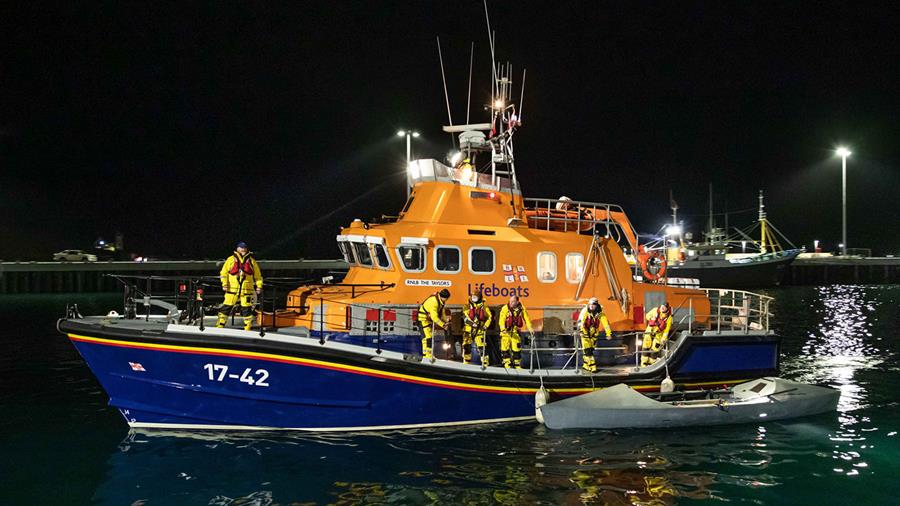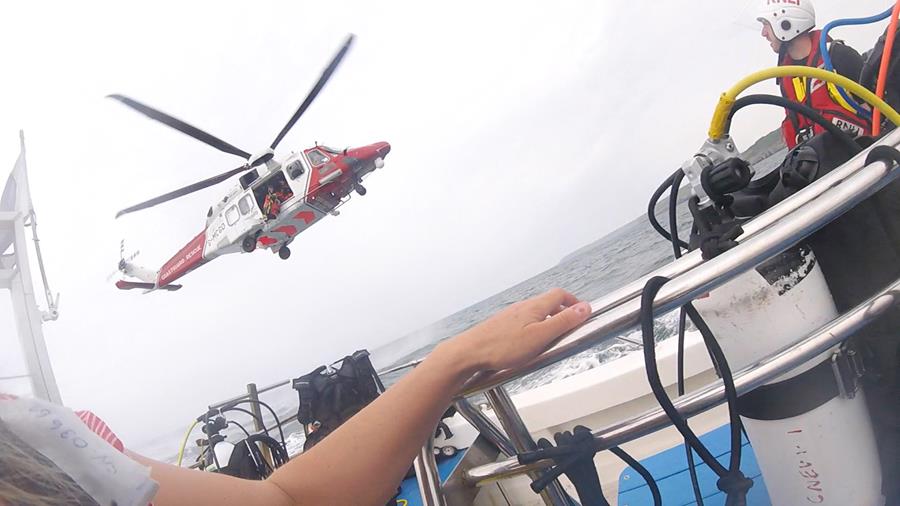
Stuck on the rocks
What would you do if you saw your 13-year old daughter pulled out to sea on an inflatable paddleboard?
That was the terrifying situation one dad faced. And he jumped in after her. But with powerful offshore winds and cold April seas, his mightiest efforts were no match for Mother Nature.
An underlying sense of urgency
Ross Jezard, Volunteer Crew Member at Fowey RNLI
I’d just come home from work and was sitting with Mum watching TV. As soon as the pager went off, my thoughts turned from the telly to tides and wind conditions. I just wanted to get to the station.
When we found out the shout was to a father and 13-year-old daughter drifting out to sea on a paddleboard, we all shared an underlying sense of urgency. Fear can quickly turn to panic. So we kept it moving and launched the D class just a little faster that day.
We’re friends and crew mates, so we look out for each other and get the job done. That kind of closeness and confidence comes with training, learning and experiencing the highs, the lows and everything in between, together.
The harbour was the only calm bit of water. A short, sharp chop, especially around Cannis Rock and the Gribben headland, made the journey uncomfortable but we had the casualties and conditions they faced in mind – cold winds and seas, jagged rocks and unstable surfaces, as well as the anxiety and tension that comes with the wait and anticipation of being rescued.
A very real risk
Oli Luck, Volunteer Crew Member at Fowey RNLI
As we headed across the bay, we received regular updates from Coastguard teams and the fixed wing aircraft who’d pinpointed the casualties’ location. With confirmation that they were both safely on the rocks, we knew we wouldn’t need to start a search.
I’m not sure who raised the alarm. We learned that when the daughter got into trouble, her father swam out to help her – but the conditions were too much and they couldn’t get back to the beach.
They were in a small bay near Black Head. Just a few hundred metres separated them from Pentewan Beach but strong offshore winds, and the metre-high chop, kept them stranded on a small ledge at the foot of some very steep cliffs.
We’d need to take the D class into the rocks, a tricky manoeuvre in difficult sea conditions, but one both the crew and lifeboat – ideal for shallow water around rocky coasts – could handle. Our Helm James Dowrick skilfully positioned the boat just close enough to put Ross ashore. It’s rescues like these that show just how valuable every aspect of our training, kit and equipment is to a happy outcome.
Watch the moment Oli, Ross, and James reach the 13-year-old paddleboarder and her father:
A reassuring presence
Ross Jezard
I’m trained in casualty care, so James made the call to put me ashore so I could brief the father and daughter on our evacuation plan.
Physically, other than being very cold and wet, they were both uninjured. To make climbing into the D class easier, James picked us up from a small rock 10 metres away, where the waters were flat.
The daughter was understandably scared and burst into tears at the thought of boarding the lifeboat. My experience on previous shouts showed me how to provide a reassuring and calming presence. Once we were on the boat, she had a massive smile on her face – they were going to be OK!
The final word
Ross Jezard
Not knowing what to look out for in a forecast is very common and this father and daughter couldn't tell that the wind was a strong offshore – blowing from the shore out to sea. If we weren't there, they could have pushed further into St Austell Bay, which is about 8 miles across!
Unless you’re very experienced and confident in your abilities and local knowledge, I would strongly advise not entering the water under these conditions.
Oli Luck
I love being part of a lifesaving service. Both the crew and the boat performed exactly as we should have. We train for these kinds of rescues often, it’s like second nature, and this was a textbook response to the shout.
Having the right equipment is vital. Without it, we might not have been able to get to them before they attempted to self-rescue – or at all.
Every rescue is powered by people who understand that there is no more important legacy than saving a life. Without the generosity of our donors, the outcome could have been very different.
RNLI lifeboat volunteers:
- helped save the lives of 77 stand up paddleboarders over the past five years
- saved 32 paddleboarders lives last year alone
- have seen a 21% rise in launches to paddleboarders across the UK and Ireland, since 2021.
Safety advice
For coastal kayaking, canoeing and stand-up paddleboarding:
- Wear a buoyancy aid or personal flotation device.
- Carry a means of communication to call for help in an emergency.
- Check the weather and tides before heading out.
- Tell others of your plans so they know when you will be returning.
- Paddle within your ability.
Categories
You may also enjoy the following











